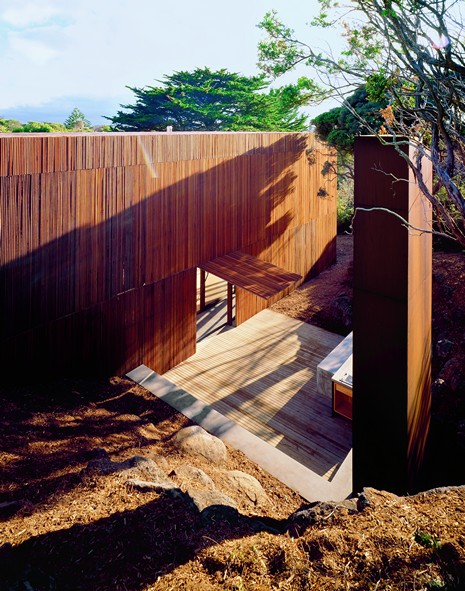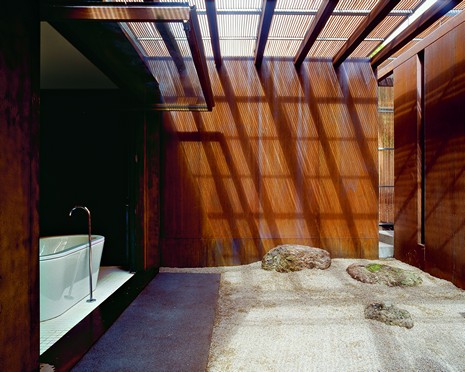Description
Here Sean Godsell uses a homogeneous, all-embracing timber-louvre envelope for a cubic block even more logically than he did in the Carter/Tucker House. This screening and yet transparent outer skin surrounds the building’s glass façade, and panels can be opened in it at functionally necessary positions. But Godsell goes considerably further than other architects in that he even includes the roof, which is largely covered in glass. Thus the roof and the façade share the same structural basis, and become one. The steel supporting structure forms the ‘exoskeleton’ and the space parcelling inside the ‘endoskeleton’ (Godsell). Access and the hybrid veranda zone already researched in the Carter/Tucker House are arranged between these structures.
As the building attempts to connect with the particular local topographical feature, a sand dune, only the upper floor can be used in the rear section. The principal access point is on the ground floor via a large terrace leading into the living area, which opens on to the veranda, jointly with the open kitchen. Here the façade exists as a membrane that–when open–ties the interior and the exterior together fluently on the same level. The bathroom and the library provide a conclusion at the back, a ‘private’ staircase leads into the bedroom area on the upper floor; this area also ties in the bathroom via a courtyard and provides access to the concluding carport. A store room functions as a separating area between carport and courtyard. Stairs inside the side access passage lead from the carport down to the entrance again, and to the side terrace. Conventional living is questioned and redefined even more than in the Carter/Tucker House, by the zoning of the rooms, by the way they are distanced using transitional and access areas within the overall form, and by regulating light appropriately to spatial functions.
Drawings
Site plan
Axonometric diagram with position of the main living area
Lower floor: main entrance to the living area, kitchen and terrace, with access strips on both sides, bathroom and library at the back
Ground floor: carport, storeroom, courtyard, bathroom and bedrooms, air space
Longitudinal section with position of the house on the sand dune
Photos

Exterior view of the side with open terrace panels and outdoor fireplace

Interior view of the bathroom with ´natural´ flooring on the top floor
Originally published in: Klaus-Peter Gast, Living Plans: New Concepts for Advanced Housing, Birkhäuser, 2005.